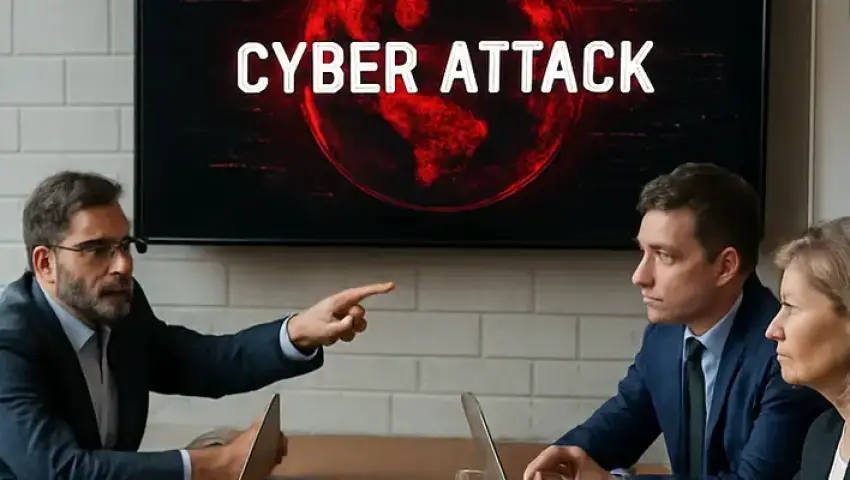
Cyber Tabletop Exercises 2025: Top Tips for an Effective Cyber Drill
Cyber Tabletop Exercises and Cyber Drills are no longer optional—they are strategic imperatives for 2025. They are the best and most cost-effective option you have for identifying blind spots in your security strategy. It’s also the most effective way to ensure everyone is conversant with the incident response plan and playbooks.
Key Features of a Successful Cyber Tabletop Exercises
As discussed above, a Cyber Tabletop Exercise is a structured, discussion-based activity where key stakeholders walk through a hypothetical cyber attack scenario. Unlike purely technical simulations, these exercises focus on decision-making, communication, and coordination.
Participants sit around a table (physical or virtual) and role-play how their organisation would respond if, say, a ransomware attack encrypted critical systems or a phishing campaign compromised employee accounts. The goal isn’t to point fingers, but to stress-test your Incident Response Plan and ensure everyone knows their roles in a real crisis.
Here’s a look at the top features of a successful cyber drill:
Realistic Scenario-Driven: Each session must be based on a realistic cyber-attack scenario tailored to your sector and your specific business. Generic or outdated scenarios will not yield any real benefits. If you simulate an attack that is very unlikely to strike a business of your size or in your sector, the exercise is essentially futile. For this reason, it’s critical to conduct a thorough threat assessment before developing your scenario—consider industry trends, relevant regulatory pressures, recent attack methods, and, where possible, lessons learned from actual incidents impacting organisations similar to yours.
A high-impact tabletop exercise incorporates factors unique to your operating environment, such as your size, technology stack, supply chain dependencies, and the regulatory obligations you face. Regularly updating scenarios ensures that your team is consistently prepared for the most probable and potentially damaging types of cyber threats relevant to your business. Keep the scenarios dynamic and incorporate input from leaders across IT, risk, compliance, and business operations to sharpen realism and ensure engagement.
Most importantly, the chosen scenario shouldn’t just ‘sound’ plausible—it must be believable to your leadership and operational teams. This will prompt genuine decision-making, authentic escalation paths, and effective cross-departmental communication throughout the exercise. By prioritising relevance, your cyber attack scenario will foster meaningful learning, surface real gaps, and deliver actionable insights that strengthen your overall incident response and cyber resilience.
- Cross-functional: Cybersecurity stopped being an IT problem a long time ago. It is now a central business focus. As recent attacks have illustrated, a cyber attack directly impacts business continuity, bottomline and reputation. Therefore, the response to an attack can’t just be limited to technical aspects alone.
Every important business function must be involved. Business leaders should definitely be at the forefront of cyber resilience planning and practise. We also offer Executive Tabletop Exercises that are curated for time-crunched board members and C-suite leaders. These exercises are brief and delivered in a business language so that the executive team is able to quickly grasp the threats that face their business and understand their role during a cyber crisis.
It’s equally critical to involve representatives from the legal, HR, PR and communications teams. In the event of an actual cyber attack, the legal and compliance teams will have to ensure that the business meets all regulatory requirements. The HR team will liaise with internal stakeholders. The PR and Communications team plays a pivotal role in communicating with external stakeholders like the media, affected customers, shareholders etc. It’s therefore imperative that all teams come together to practise a unified and cohesive response. - Action-oriented: A well-designed cyber drill doesn’t just end with theoretical discussions or hypothetical outcomes—it drives tangible, actionable results. Every exercise should culminate in a set of clear action items tailored to the organisation’s unique environment.
These outcomes typically include:
1. Identifying Gaps: Cyber drills should help uncover weaknesses in your current incident response plans, processes, and communication protocols. Whether it’s a missing escalation step, an overlooked dependency, or unclear ownership, these gaps become visible only when a real-world scenario is simulated.
2. Improving Playbooks: The insights from a cyber tabletop exercise should directly feed into refining incident response playbooks. Teams can update checklists, streamline workflows, and create more practical, step-by-step guidance based on how they actually performed under pressure.
3. Strengthening Readiness: By translating lessons into action items, your organisation will emerge from a drill not just with more awareness, but with a stronger, measurable level of preparedness for future incidents.
Mrityunjay Singh
Leave a comment
Your email address will not be published. Required fields are marked *

